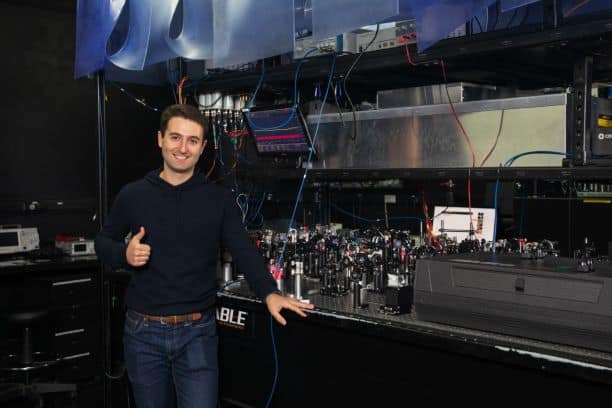General Considerations
Αναζήτηση αναρτήσεων
Τρίτη 29 Δεκεμβρίου 2020
General Considerations
ΠΕΡΙΣΣΟΤΕΡΑ ΓΙΑ ΤΟΝ COVID - 19 . (3 ΑΡΧΕΙΑ)
Severe Acute Respiratory Syndrome—Coronavirus 2019 (SARS-CoV-2)
Severe Acute Respiratory Syndrome—Coronavirus 2019 (SARS-CoV-2)
Κυριακή 27 Δεκεμβρίου 2020
When to Admit for corona virus infection covid-19
When to Admit for coronavirus covid - 19 infection
The principal complications requiring admission are respiratory. Progression to respiratory failure and ARDS can be rapid, and any patient in a high-risk category for complications (advanced age; immunosuppression; chronic diseases, particularly hypertension, obesity, and diabetes) should be admitted for observation and placed under intensive care based on respiratory parameters. Corey BL et al. A strategic approach to COVID-19 vaccine R&D. Science. 2020 May 11. [Epub ahead of print] [PMID: 32393526] JAMA Coronavirus Disease 2019 (COVID 19). https://jamanetwork.com/journals/jama/pages/coronavirus-alert Lancet COVID-19 Resource Centre. https://www.thelancet.com/coronavirus?dgcid=kr_pop-up_tlcoronavirus20
Moore BJB et al. Cytokine release syndrome in severe COVID-19. Science. 2020 May 1;368(6490):473–4. [PMID: 32303591] New England Journal of Medicine-coronavirus (COVID-19). https://www.nejm.org/coronavirus Riphagen S et al. Hyperinflammatory shock in children during COVID-19 outbreak. The Lancet Online. 2020 May 6. Published online. https://doi.org/10.1016/S0140-6736(20)31094-1. Wang Y et al. Remdesivir in adults with severe COVID-19: a randomised, double-blind, placebo-controlled, multicentre trial. Lancet. 2020;395(10236):1569–78. [PMID: 32423584]
medical sources 27/12/2020
Σάββατο 26 Δεκεμβρίου 2020
Παρασκευή 18 Δεκεμβρίου 2020
Japan’s Hayabusa 2 mission returns asteroid sample to Earth
Japan’s Hayabusa 2 mission returns asteroid sample to Earth
Silicon-based material with a direct band gap is the Physics World 2020 Breakthrough of the Year
Silicon-based material with a direct band gap is the Physics World 2020 Breakthrough of the Year
Celebrating Black physicists
Celebrating Black physicists
Doing physics in the time of COVID-19
Doing physics in the time of COVID-19
A passion for nanotechnology in medicine: Black in Nanotech Week cofounder Olivia Geneus on inspiring new nanoscientists
A passion for nanotechnology in medicine: Black in Nanotech Week cofounder Olivia Geneus on inspiring new nanoscientists
Planet Nine: is it a planet, a primordial black hole or something else entirely?
Planet Nine: is it a planet, a primordial black hole or something else entirely?
Could there really be life in the clouds of Venus?
Could there really be life in the clouds of Venus?
How capable are today’s quantum computers?
How capable are today’s quantum computers?
Autonomous cars: potential lifesavers but with new risks
Autonomous cars: potential lifesavers but with new risks
Face shields cannot protect wearers from virus particles carried by vortex rings
Face shields cannot protect wearers from virus particles carried by vortex rings
Πέμπτη 17 Δεκεμβρίου 2020
Optical sensor offers non-invasive monitoring of intracranial pressure
Optical sensor offers non-invasive monitoring of intracranial pressure
Microtube implosions could produce megatesla magnetic fields
Microtube implosions could produce megatesla magnetic fields
Laser ‘speed limit’ leaves defects in 3D-printed parts
Laser ‘speed limit’ leaves defects in 3D-printed parts
Destructive quantum interference improves single-molecule switch
Destructive quantum interference improves single-molecule switch
Tiny particles get the panoramic treatment
Tiny particles get the panoramic treatment
China launches sample-return mission to the Moon
China launches sample-return mission to the Moon
Little book, big science
Little book, big science

Τετάρτη 16 Δεκεμβρίου 2020
Fundamental constant measured at highest precision yet
Fundamental constant measured at highest precision yet
Aspiring astronaut and Space Age ambassador
Aspiring astronaut and Space Age ambassador

Balloon-borne telescopes could keep cool with less
Balloon-borne telescopes could keep cool with less
Ultracold atoms put high-temperature superconductors under the microscope
Ultracold atoms put high-temperature superconductors under the microscope
Fast quantum random number generator could advance cryptography on the cheap
Fast quantum random number generator could advance cryptography on the cheap
Therapeutics firms share inaugural prize for health physics
Therapeutics firms share inaugural prize for health physics
Magnetic illusion’ can create magnetic fields at a distance
Magnetic illusion’ can create magnetic fields at a distance
Sound waves in fermionic superfluid are studied in a ‘beautiful’ experiment
Sound waves in fermionic superfluid are studied in a ‘beautiful’ experiment
The European Spallation Source: an overview: Cryogenics makes the European Spallation Source a hot property in neutron science

Physicists fine tune chemical reaction rates for ultracold molecules
Physicists fine tune chemical reaction rates for ultracold molecules
DNA origami makes 3D superconducting nanostructures
DNA origami makes 3D superconducting nanostructures
New family of quasiparticles appears in graphene
New family of quasiparticles appears in graphene
New fuel gauge for spacecraft could keep satellites active for longer
New fuel gauge for spacecraft could keep satellites active for longer
Neutron-rich tantalum offers a view of how heavy elements are forged
Neutron-rich tantalum offers a view of how heavy elements are forged
MRI during treatment could improve paediatric proton therapy
MRI during treatment could improve paediatric proton therapy
Nanoparticle sensitizers could enhance radiotherapy effectiveness
Nanoparticle sensitizers could enhance radiotherapy effectiveness
Κυριακή 6 Δεκεμβρίου 2020
ΟΔΗΓΙΕΣ ΓΙΑ ΤΗΝ ΕΠΙΛΥΣΗ ΠΡΟΒΛΗΜΑΤΩΝ ΣΤΗΝ ΦΥΣΙΚΗ – ΓΕΝΙΚΟΤΕΡΗ ΜΕΘΟΔΟΛΟΓΙΑ
ΟΔΗΓΙΕΣ ΓΙΑ ΤΗΝ ΕΠΙΛΥΣΗ ΠΡΟΒΛΗΜΑΤΩΝ ΣΤΗΝ ΦΥΣΙΚΗ – ΓΕΝΙΚΟΤΕΡΗ ΜΕΘΟΔΟΛΟΓΙΑ





















